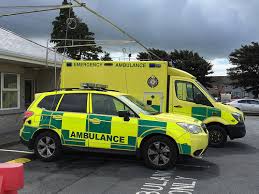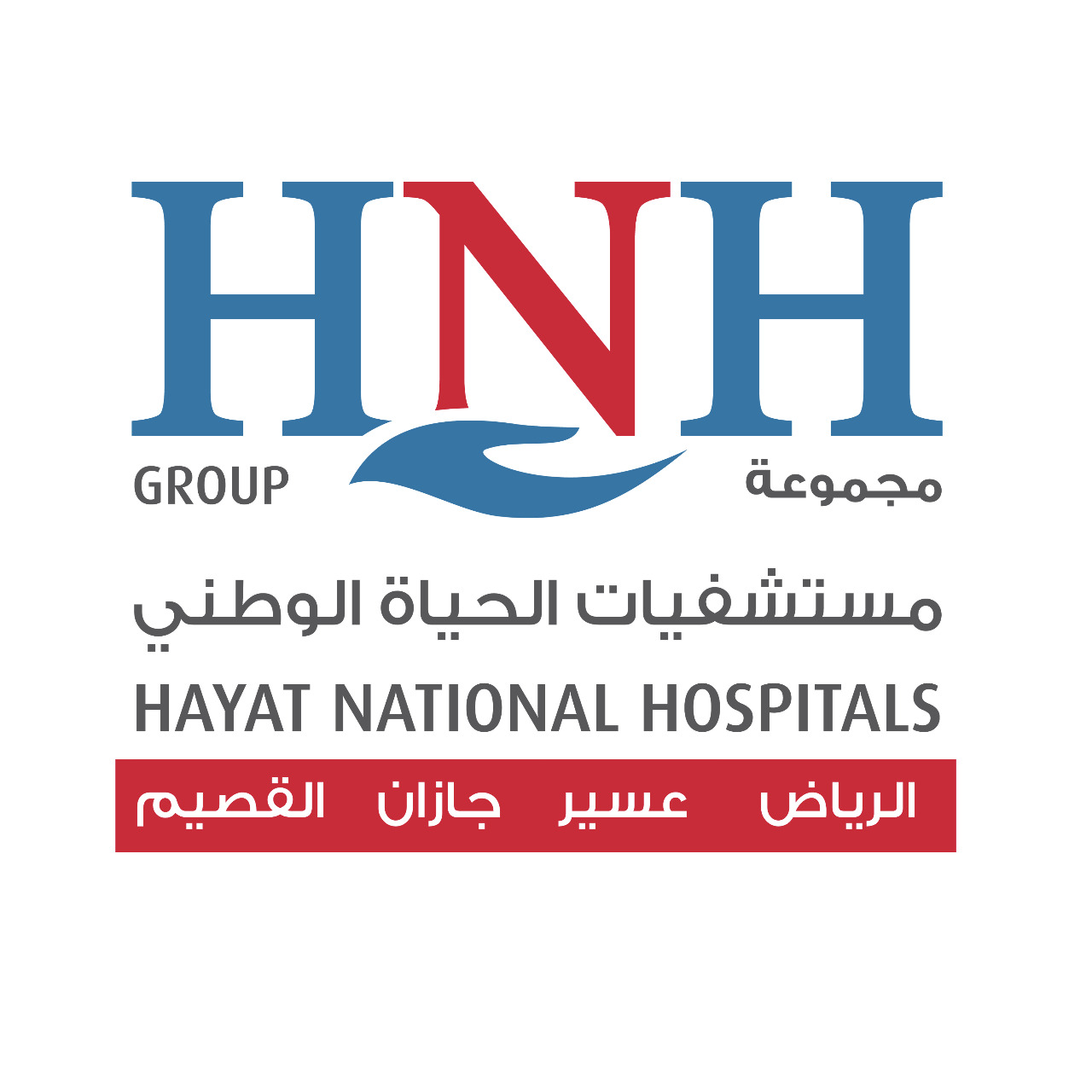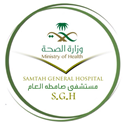Title Page
-
Conducted on
-
Audit Performed by
-
Location of Audit
Isolation Precautions
-
Non-critical patient-care equipment are single use or dedicated to one patient
-
The signs used to indicate categories of isolation precautions are:1) Clear and visible for HCWs and visitors2) Bilingual (in Arabic & English).3) Color coded and compatible with diagnosis e.g., contact: green, airborne: blue, droplet: pink or red
-
The receiving unit or facility is informed about the required isolation precautions and availability of appropriate PPE is ensured
-
Patient under droplet / airborne isolation precautions, is transferred wearing surgical mask
-
Single-dose or single-use vials are used for a single patient and a single procedure/injection (i.e., single-dose vials are not stored for future use even on the same patient)
-
Needles and syringes including prefilled syringes, and vacutainer holders are used for a single procedure/injection
-
Cartridge devices such as insulin pens are used for only one patient
-
Supplies are brought to patient’s care area only when needed and after patient discharge, all remaining single-use items are discarded while reusable ones are sent for reprocessing, even unused items with intact original wrap
-
Multi-dose vials are used for a single patient whenever possible, dated when they have been opened and accessed for the first time, and discarded after 28 days unless the manufacturer specifies a different shorter or a longer date (i.e., reuse life)
-
If multi-dose vials are used for more than one patient, they are be kept and accessed only in a medication preparation area (away from immediate patients’ treatment areas)
-
The rubber self-sealed cap of a medication vial or an IV solution bottle is disinfected with alcohol prior to access
-
IV solution bottles are only accessed through the self-sealed rubber cap
-
Administration of IV sets, including secondary sets and add-on devices, that are continually used to infuse crystalloid solutions (hypotonic, isotonic, or hypertonic), are replaced not more frequently than 96-hour intervals, but at least every 7 days
-
Administration of IV sets that are used to administer blood, blood products, or lipid emulsions, or dextrose/amino acid TPN solutions are replaced within 24 hours of initiating the infusion
-
A sterile urine bag is continuously connected to urinary catheter and evacuated with proper technique and appropriate PPE
-
Visual signs for patients and visitors on recommended Hand Hygiene & Respiratory Hygiene/Cough Etiquette practices are posted in the emergency department and inpatient areas
Housekeeping & Hospital Environment
-
There are separate clean and dirty utility rooms in each patient care area
-
Allocated staff for housekeeping are trained on hand hygiene, use of PPE, methods of cleaning, and proper and safe mixing of chemicals
-
Bedside curtains are clean, free of stains and changed regularly & when visibly contaminated
Infectious Medical Waste
-
No infectious medical waste or sharps are observed outside specified containers
-
Medical waste bags are collected after being securely closed when filled to 3/4 of its maximum capacity and labelled with the date and place of production
-
Sharp boxes are collected after being securely closed when filled to 3/4 of its maximum capacity and labelled with the date and place of production
-
Collection & transportation of medical waste are done by allocated workers wearing proper PPE at fixed times and on demand
-
Infectious medical waste is transported in closed and impervious specified carts with biohazard sign. Carts are cleaned after each use or at least daily
Medical Storage
-
Medical storage areas have controlled ventilation with adjusted temperature and humidity (temperature ranges from 22 °C to 24 °C / relative humidity up to 70%)
-
Storage shelves are made of easily cleanable material, e.g., fenestrated stainless steel, Aluminium or hard plastic
-
Sterile and clean items are completely separated from personal items, foods and drinks
-
No Items are kept in the original shipping boxes, especially in the clinical areas
-
Construction & Renovation
Airborne Infection Isolation Rooms (AIIRs)
-
The entry of AIIR is through an ante-room that serves as a site for hand washing, donning and doffing of PPE
-
Airborne Infection Isolation Rooms (AIIRs) are under negative pressure (minimum -2.5 Pascal) with air totally exhausted to outside (100%) through High-Efficiency Particulate Air (HEPA) filter
-
There is evidence of regular monitoring of negative pressure difference of AIIRs:• Daily when in use (i.e., a patient is isolated inside).• Weekly when not in use (i.e., no patient is isolated).• Monthly check by biomedical personals
-
HEPA filter is changed on a regular basis and according to manufacturer's recommendations
-
There is evidence that air exchange of AIIR is ≥ 12 air changes per hour (12 ACH) with regular monitoring (at least quarterly)
-
AIIRs are used only for isolation of suspected or confirmed cases with airborne infectious diseases
Endoscopy & HD
-
Endoscopy
-
Soiled endoscopes are transported safely in a suitable closed container to the reprocessing area
-
Reusable heat-stable accessories that break the mucosa (critical high risk items e.g., biopsy forceps) are sent to CSSD for sterilization after each use
-
Reprocessed endoscopes and accessories are stored safely and securely (uncoiled, hanging vertically in a clean, dry, and well ventilated storage cabinet)
-
Bronchoscopy is performed only in a room with negative air pressure (-2.5 Pa), a minimum of 12 air exchanges per hour, and discharged through HEPA filtration system
-
Haemodialysis Unit (HD)
-
For preparation of medications a central area (clean) is specified, which is physically separated from patient’s treatment areas (contaminated)
-
The distance separating adjacent beds should be at least 4 feet in distance between stations to avoid contamination
-
Easy accessible hand washing sinks are available in adequate number (one for every 2-4 chair/beds)
-
An Alcohol hand rub device is available for every patient's chair/bed
-
Appropriate PPE (gloves: clean/sterile, gowns, goggles or facesheild and N95 respirators) are available and used according to standard and/or transmission based precautions
-
Haemodialysis patient’s environment (surfaces of machines including the control panels, chairs/beds,
-
etc.) is cleaned and disinfected after each treatment session with an approved disinfectant
-
Supplies and equipment such as blood pressure cuffs, stethoscopes, scissors and thermometers are allocated to a single patient and are disposed (if single use) or cleaned and disinfected (if reusable) at the end of each patient treatment session
-
Centeral line catheter maintenance, connection and disconnection are done according to CDC guidelines
-
The process of internal cleaning and disinfection of dialysis machines in-between patients is performed according to manufacture's recommendations
-
Water treatment system is regularly maintened with change of filters according to the manufacturer’s instructions. Cleaning and disinfection of the water treatment and distribution system is performed at least once weekly
-
Treated water is regularly subjected to chemical testing at least once per year
-
Microbiological testing for water and dialysite is conducted monthly, if standards are exceeded, testing is done weekly until meeting standards.(maximum acceptable level is 100 (CFU) per milliliter of water and the action level is 50 CFU)
-
Endotoxin testing for water is performed at least once per month, and if not up to standards, testing is repeated weekly until the problem is resolved (maximum acceptable level is 0.25 EU/ml action level is 0.1 EU/ml)
-
The results of chemical and microbiological testing of water are available and reviewed by responsible nephrologist and infection control practitioners, and an action is taken accordingly
-
Patients are tested for HBV and HCV, HIV at the beginning of dialysis, and those with negative results are rescreened every 3 - 6 months. Hepatitis B susceptible patients are vaccinated
-
HCWs are tested for HBV and HCV upon hiring and annually, and vaccine is given for those who are susceptible to hepatitis B
-
HVB +ve patients are strictly segregated in a separate room(s), treated by dedicated staff during dialysis sessions using designated machines, equipment, instruments, supplies, and medications which are used only for them
-
Patients –ve for HBV, but +ve for HCV and/or HIV are treated in separate areas /rooms using dedicated machines, supplies and instrument
Compound Sterile Preparation (CSP) / Pharmacy
-
Compound sterile preparation (CSP) is restricted to competent pharmaceutical staff (except during emergency situations), who are familiar with aseptic techniques and proper use of appropriate PPE
-
Compound sterile preparation (CSP) room/area is a functionally separate facility which is under positive pressure
-
The doors of the compound sterile preparation (CSP) room/area are equipped with an auto-closure mechanism
-
Mixing IV medications is performed in laminar air flow hood or safety cabinet, with air supplied through High-Efficiency Particulate Air (HEPA) filter
-
Compound sterile preparation (CSP) room/area is cleaned and disinfected with an approved detergent/disinfectant
-
Working surface (under the laminar air flow hood) is regularly disinfected by an approved disinfectant using non-linting wipes
-
Maintenance records for hoods and safety cabinets are available
-
All supplies and containers used in CSPs preparations are sterile
-
Operating Room (OR)
-
There is a written policies and procedures for infection control in OR including a clear policy to handle patients under Air-borne Infection Isolation Precautions inside OR (e.g., TB)
-
There is a clear demarcation between unrestricted, semirestricted and restricted zones of OR with restrictions and special precautions for movement between these zones
-
Floors, walls, ceiling are: formed of one piece without connections, cracks, or decorative parts, with minimal openings that are completely sealed, and withstand repeated cleaning and disinfection
-
At least one large scrubbing sink is available at entry to each operating theater
-
Storage areas in the OR is organized and well maintained
-
Only necessary items are kept in the restricted area of the OR
-
Doors are kept closed and only necessary personnel are allowed in the theater
-
OR environment is maintained clean and there are clear procedures for cleaning and disinfection by allocated housekeeping staff after each surgical procedure and at least daily
-
Ventilation system operates all the time and never shuts down even in long holidays, and air is introduced from the ceiling and exhausted near the floor
-
All re-circulated or fresh air is filtered through High-Efficiency Particulate Air (HEPA) filters that are maintained and replaced as per the manufacturer recommendations
-
Operating Room is maintained at positive pressure (at least +2.5 Pascal) with respect to corridors
-
Operating Room is maintained at ≥ 15 air changes per hour (ACH) with 20% fresh air
-
Operating Room itemperature ranges from 21 °C to 24 °C and relative humidity from 20% to 60%
-
Patients with infectious transmissible diseases are scheduled towards the end of the operating list
Laboratory
-
There is a written policies and procedures for IC in the laboratory
-
Access is restricted with a sign incorporating the universal biohazard symbol posted at the entrance
-
Eating, drinking, handling contact lenses, and storing food are not permitted
-
All manipulations of infectious materials that may generate aerosols are properly contained or conducted in a biological safety cabinet (BSC - class II-B)
-
Biological Safety Cabinets (BSC - class II-B) dedicated for aerosols generating procedures are tested and certified at least annually
-
Whenever possible, glass tubes are replaced by plastic ones
-
Emergency shower and eyewash station is available for immediate decontamination after exposure to hazardous chemicals
-
Specimen collection and receiving area are equipped with hand washing facilities and proper PPEs
-
Tuberculosis laboratory is at least biosafety level III (BL-3) that is separated from other parts of building by an anteroom and equipped with Biological Safety Cabinet (BSC - class II-B)
-
Cultures plates are autoclaved in appropriate autoclave bags and then contained inside yellow coloured bags with a biohazard symbol before disposal as infectious medical waste
-
Working surfaces and equipment are regulaly cleaned and disinfected
-
Laboratory personnel perform hand hygiene and wear appropriate PPE when indicated
Dental Services
-
There are written IC policies and procedures for the dental setting
-
No reprocessing of instruments is carried inside the dental clinic (all the contaminated items are sent to the central sterilization department)
-
Single-use devices (e.g., disposable examination set, anesthesia carpule/cartidge, etc. …) are discarded immedialtely after each patient
-
All reusable dental instruments (critical and semicritical dental items) are sent to CSSD after each patient
-
Contaminated dental instruments including dental handpieces are transferred to the central sterilization department in a closed, sealed, puncture- resistant containers
-
If reprocessing of instruments will not be carried within two hours, transportation gel/spray is applied before sending them to CSSD
-
Engineering controls (e.g., self-sheathing anesthetic needles, safety scalpels) are used to prevent injuries
-
If needles with self-sheathing mechanism and recapping devices are not available, dental care personnel use one-handed recapping (scoop technique) for recapping needles
-
Clinical contact surfaces (contaminated and frequently touched surfaces in the patient-care area): light handles, bracket trays, switches on dental units, computer equipment are either barrier protected or cleaned and disinfected after each patient
-
Housekeeping surfaces (e.g., floors, walls, and sinks) cleaned with water and detergent or disinfectant/detergent on a routine basis or when they are visibly dusty or soiled
-
Dental unit waterline treatment products / devices are used to ensure that water quality meets regulatory standards for drinking water for routine dental treatment (i.e., ≤ 500 CFU / ml of heterotrophic water bacteria) and this is tested at least semiannualy
-
During surgical procedures, only sterile solutions are used as a coolant / irrigant using an appropriate delivery device
-
Dental care personnel apply standard precautions while performing dental x-rays
-
Dental lab personnel adhere to standard precautions while performing dental lab procedures
-
Before handling dental prostheses and prosthodontics materials in the dental lab (e.g., impressions, bite registrations, and occlusal rims), they are cleaned and disinfected according to manufacturers' instructions
Dietary Services
-
Kitchen staff practice hand hygiene properly and use suitable PPE while handling food
-
Kitchen staff with respiratory infections, gastroenteritis, diareaha or hand infections or wounds are restricted from handling food
-
Kitchen is designed as physically separated areas with specified equipment & supplies (e.g., Mixers, juicers, knives, etc) for different types of food
-
Adequate numbers of hand washing facilities and/or hand rub antiseptic devices are available
-
Temperature requirements and protection from contamination are considered during receiving, storage, preparation, display and transportation of food
-
Garbage containers or receptacles are adequate in number, well distributed, insect and rodent proof and with covers controlled by foot
-
Boards and knives used to cut meat, poultry, fish or vegetables are identifiably separated (color- coded) and immediately washed after use
-
Food containers are properly labelled with expiry dates noted. Expiry dates of food stuffs are checked before use
-
Refrigerator & Freezer temps are continuously monitored and documented on log sheets and relevant actions are taken
-
Food containers and cooking utensils are washed immediately after being emptied
-
There is an Insect and rodent control plan that is strictly implemented
-
The kitchen environment is clean (i.e., frequently cleaned, dry and dust free)
Laundry
-
Work flow is unidirectional from a soiled area to clean area with complete physical separation between them
-
Hand hygiene facilities and supplies are available & easily accessible, especially in the dirty area
-
Clean and dirty linen are separated during transport, linen carts used for clean and dirty linen are clearly identified
-
Soiled linen (visibly contaminated with patient’s blood, excreta, or other body fluids), and linen from patients under isolation precautions are handled as little as possible, with appropriate PPE, and special color-coded and leak-proof laundry bags are used
-
During high temp washing cycle, water temp is at a minimum of 71°C for 25 minutes (heat disinfection), and this is recorded
-
During low temp washing cycle (22°C - 50°C), sodium hypochlorite is added as a disinfectant during bleach wash cycle (chemical disinfection: residual bleach is 50 - 150 ppm), this is monitored and controlled
-
Routine inspection is conducted after washing, and linen with blood or/and body fluid stains is washed again
The Mortuary
-
There is a written policies and procedures that address safe handling of dead bodies, including postmortem handling of patients under isolation precautions and bodies with open wounds
-
Hand hygiene facilities and supplies are available & easily accessible
-
The mortuary is generally clean, well ventilated, and well organised. There is a regular schedule of cleaning activities (cleaning and disinfection) that includes all environmental surfaces and equipments
-
The temperature of the morgue refrigerator is kept at 2-4°C and logged daily
-
For long-term preservation of dead bodies, the facility must provide a deep freezing compartment (temp < -15°C)











